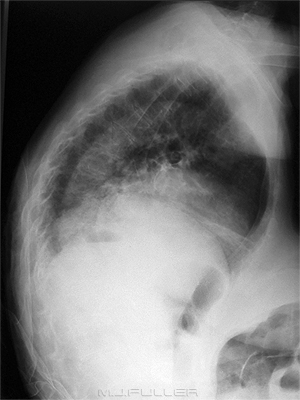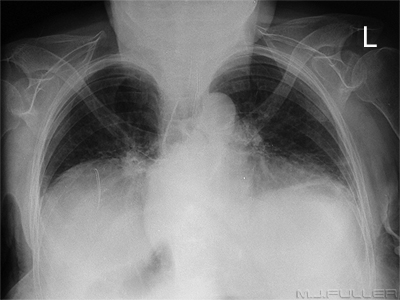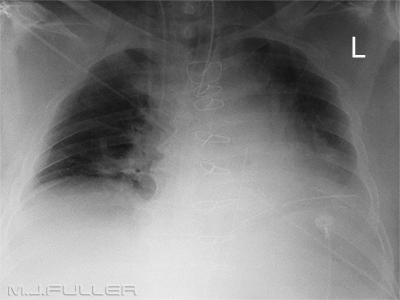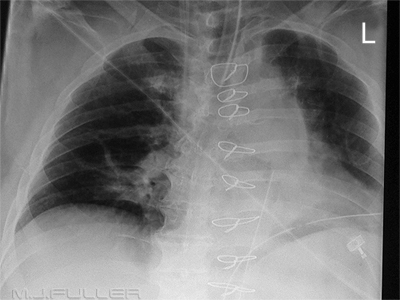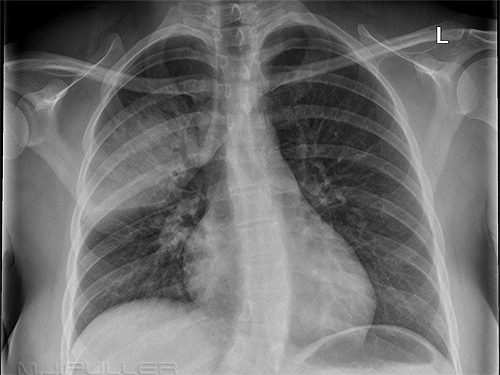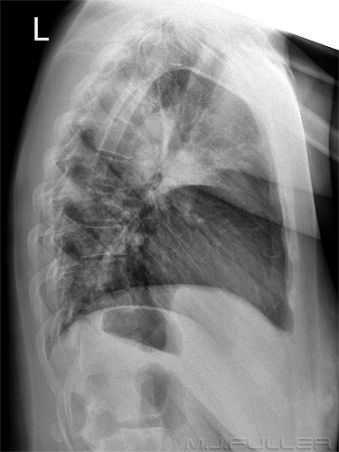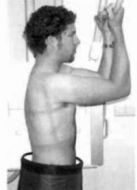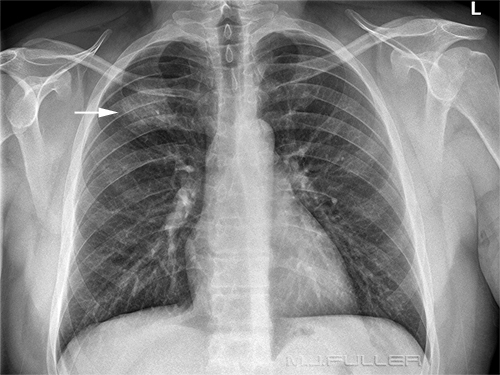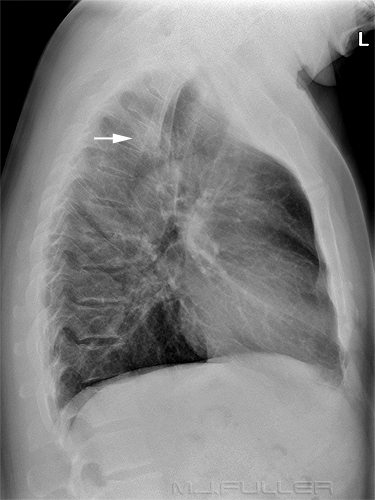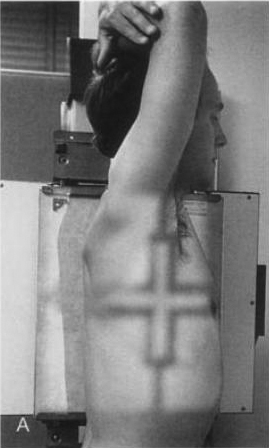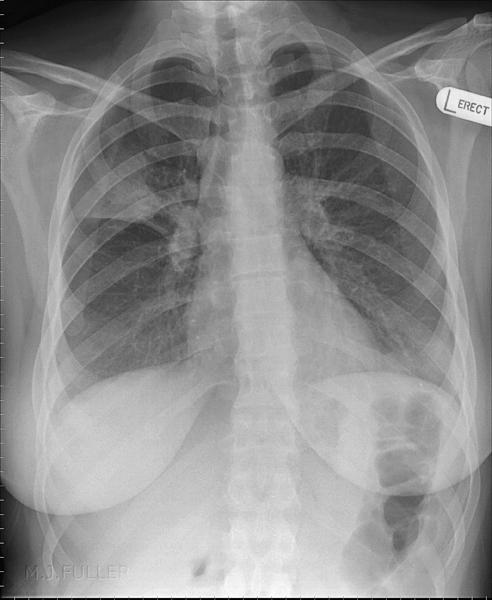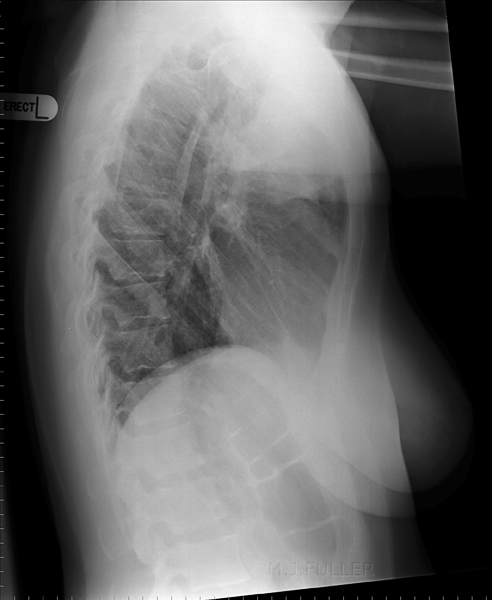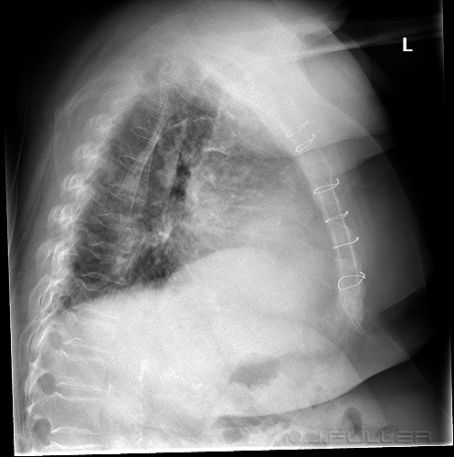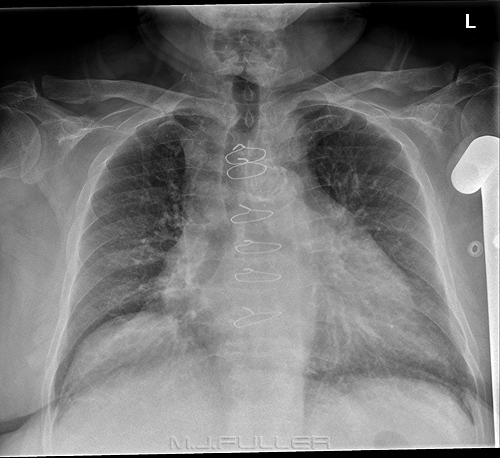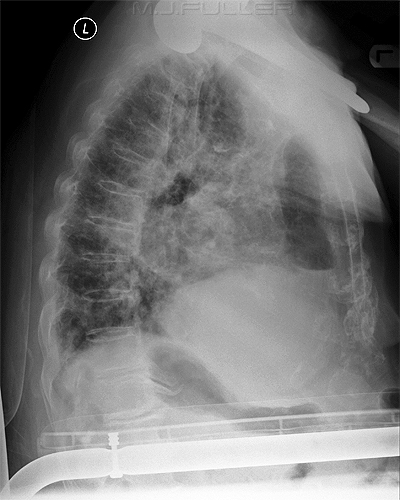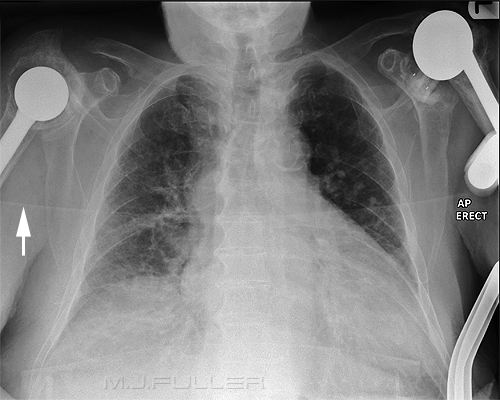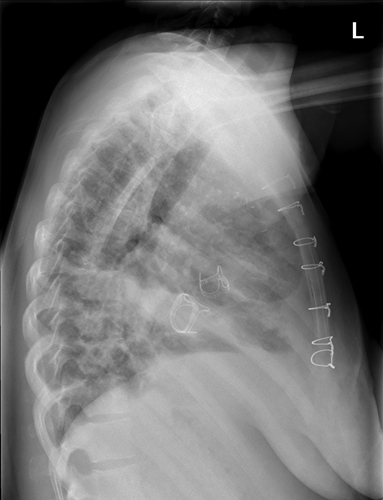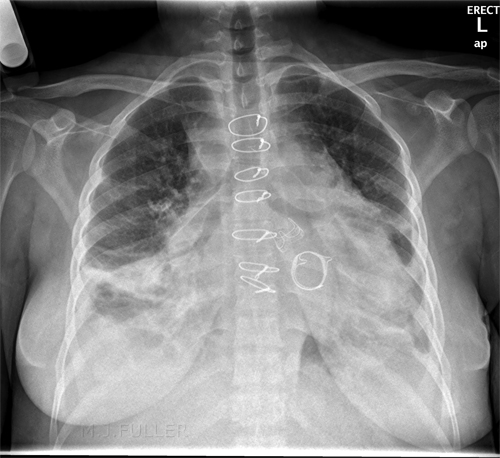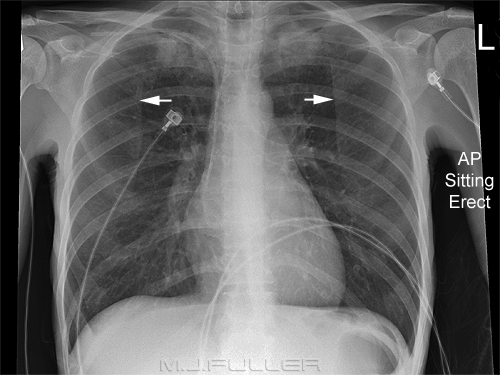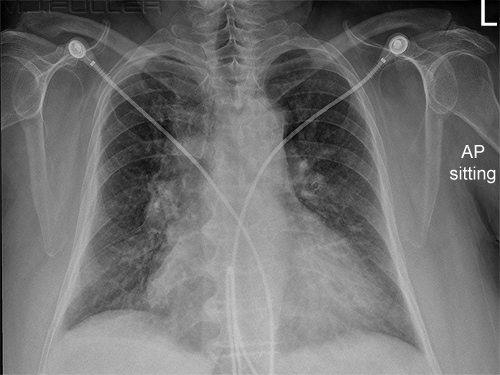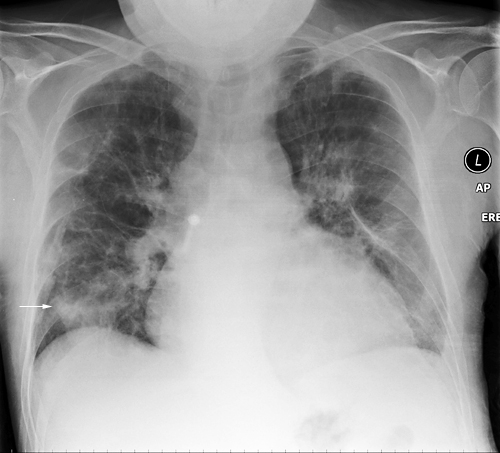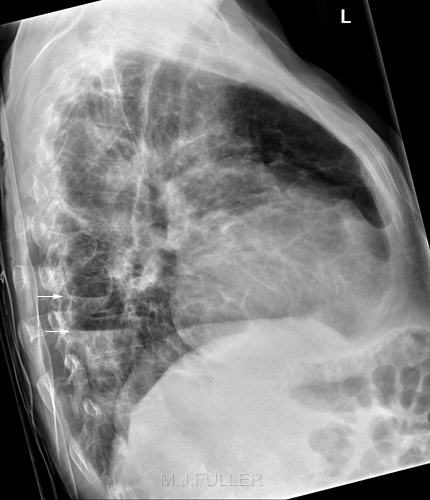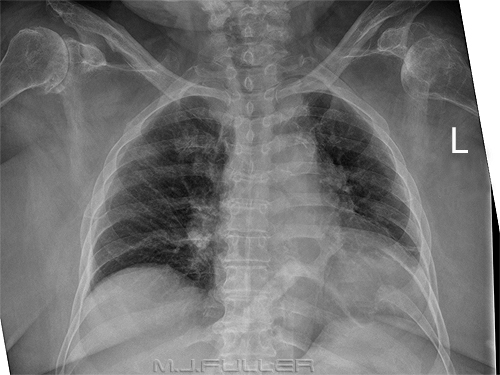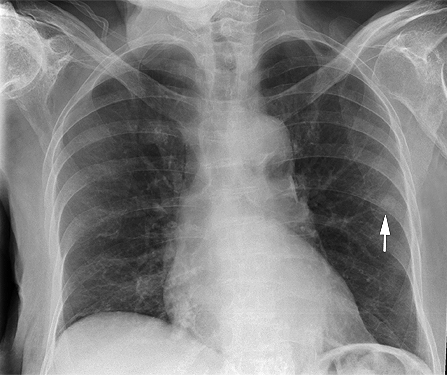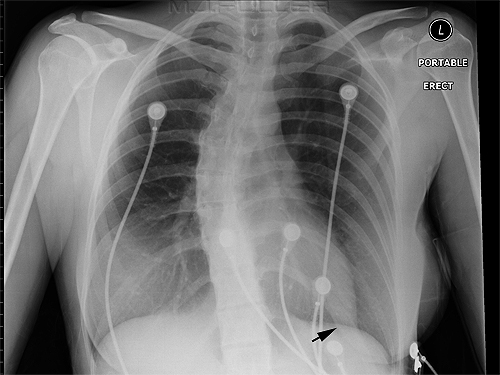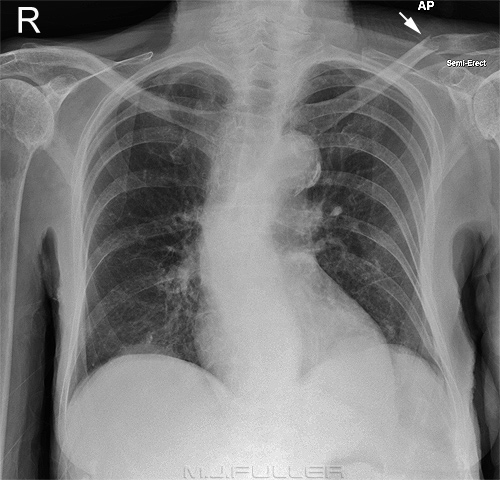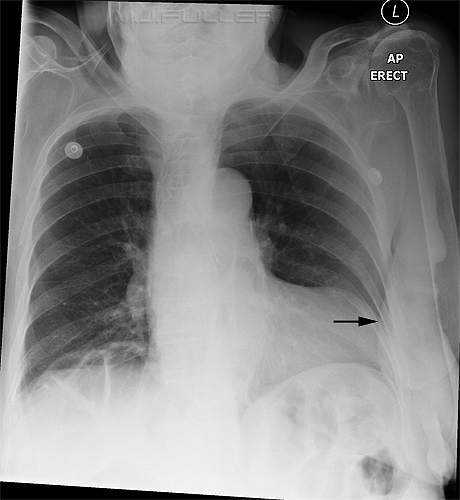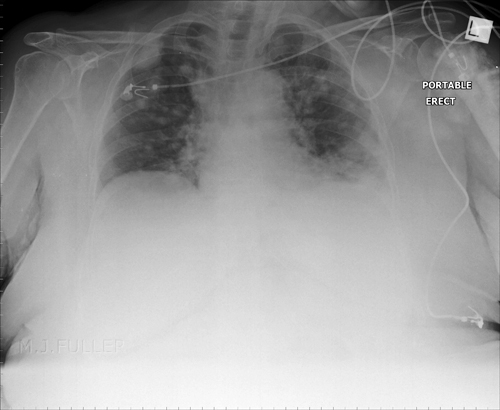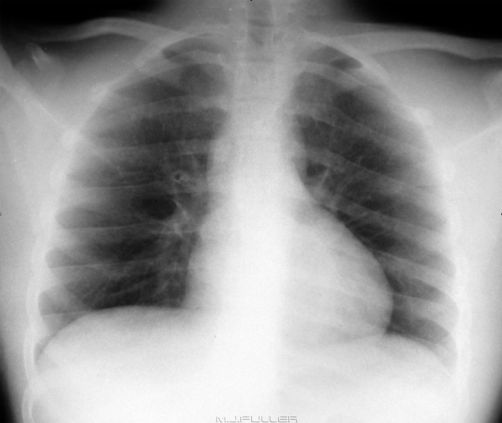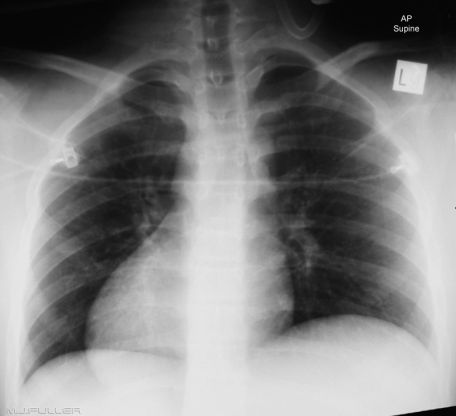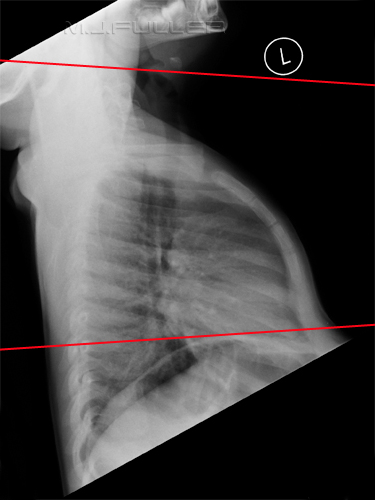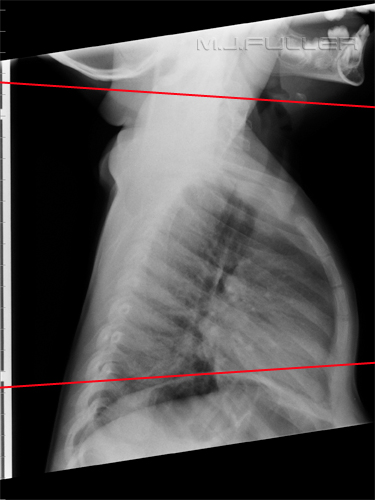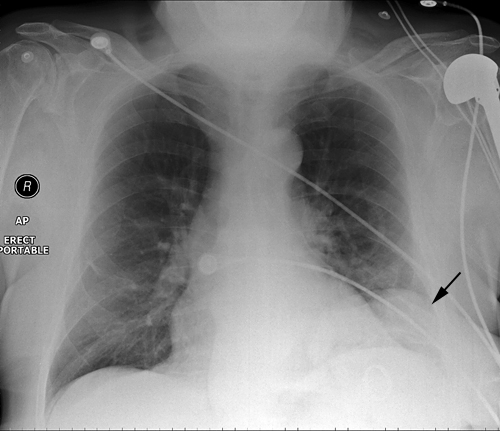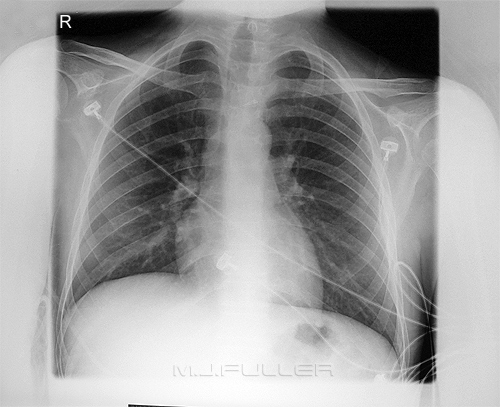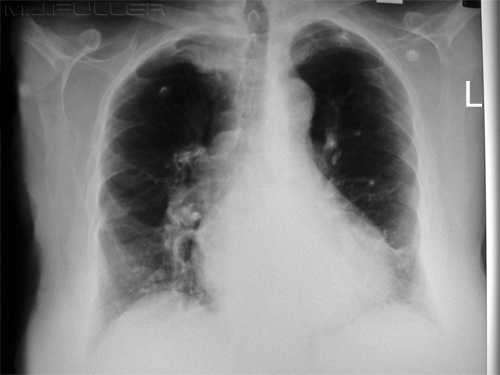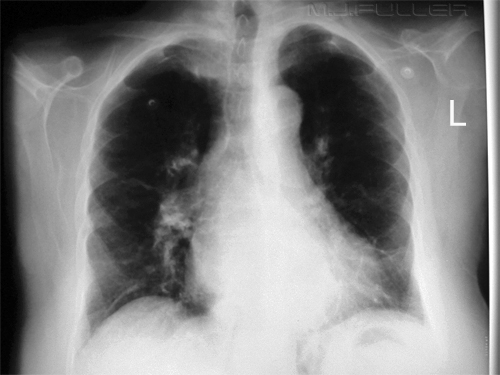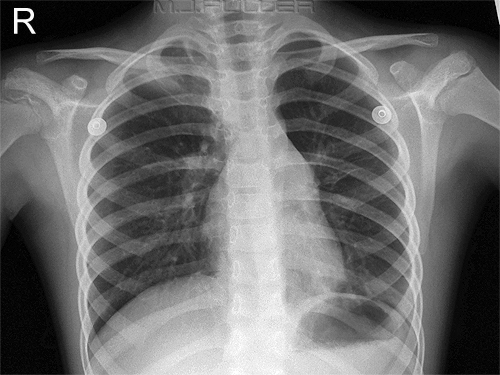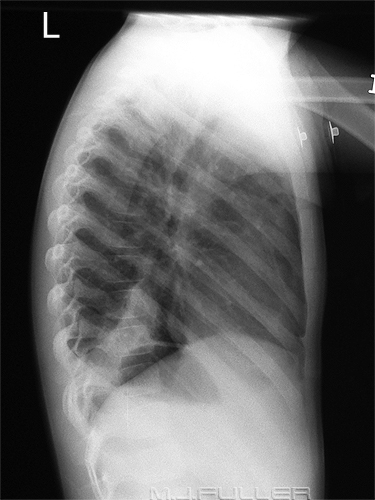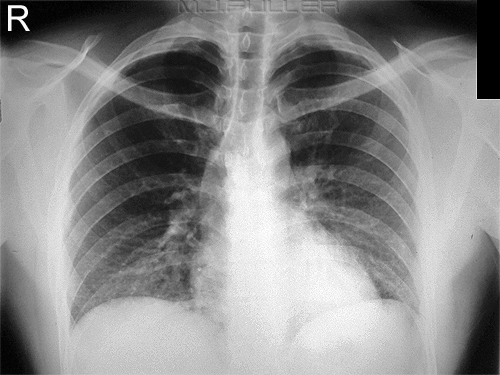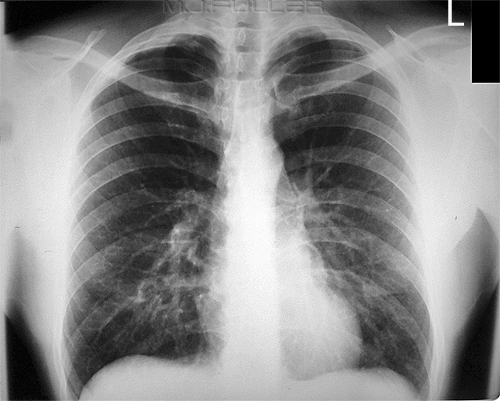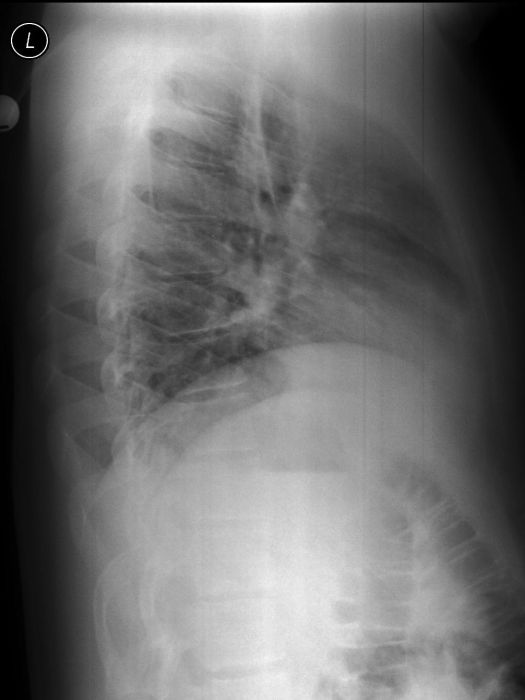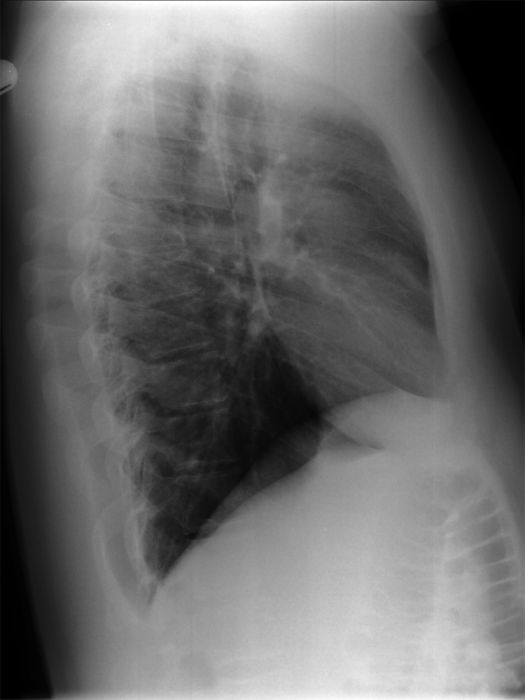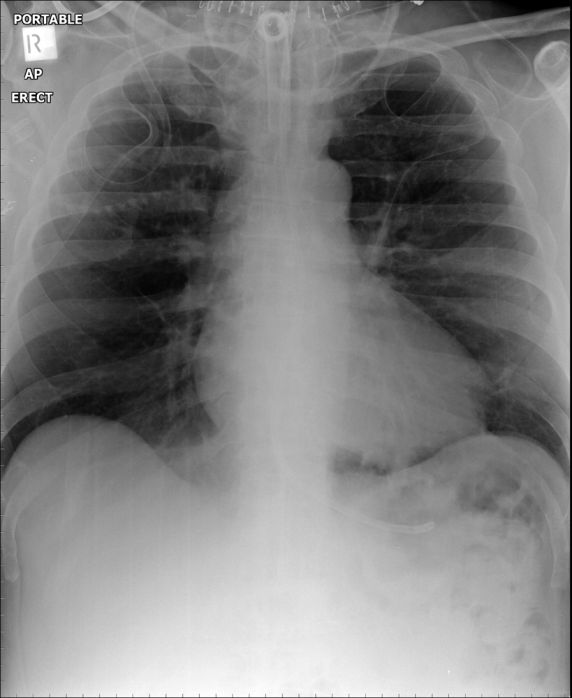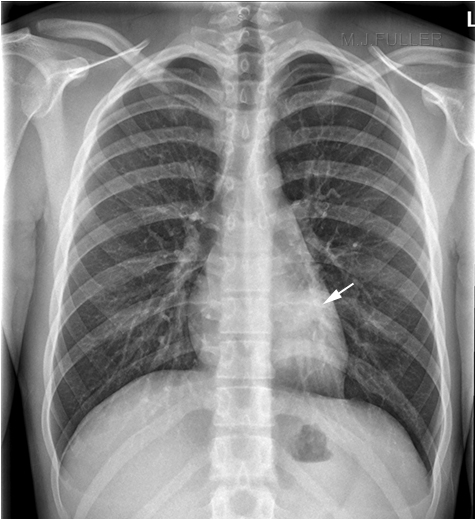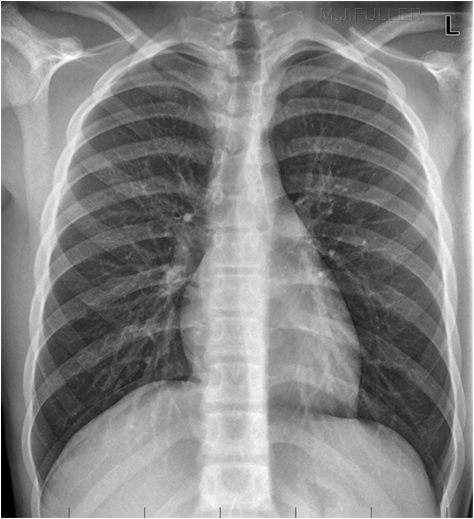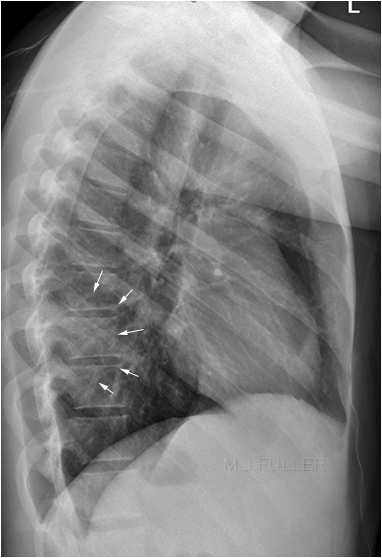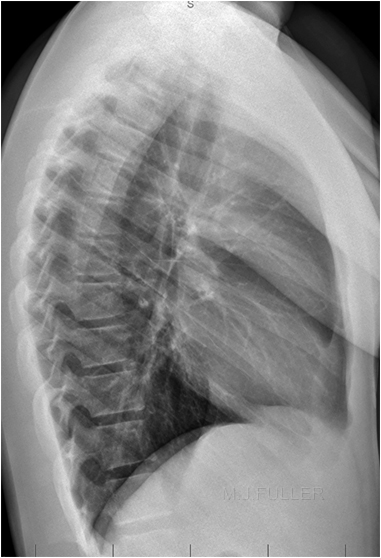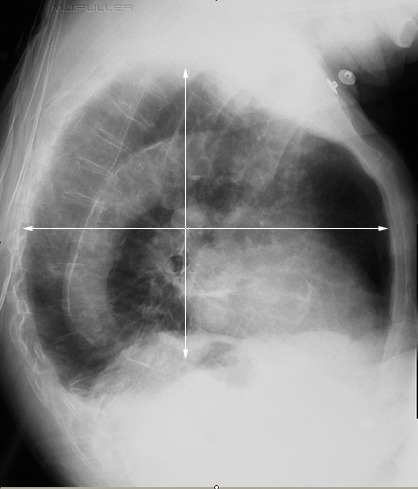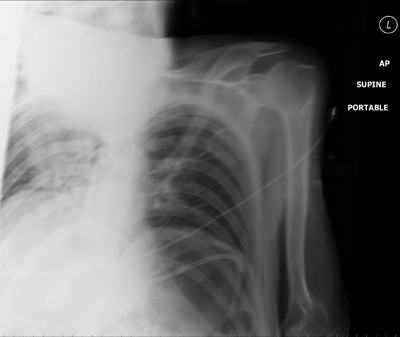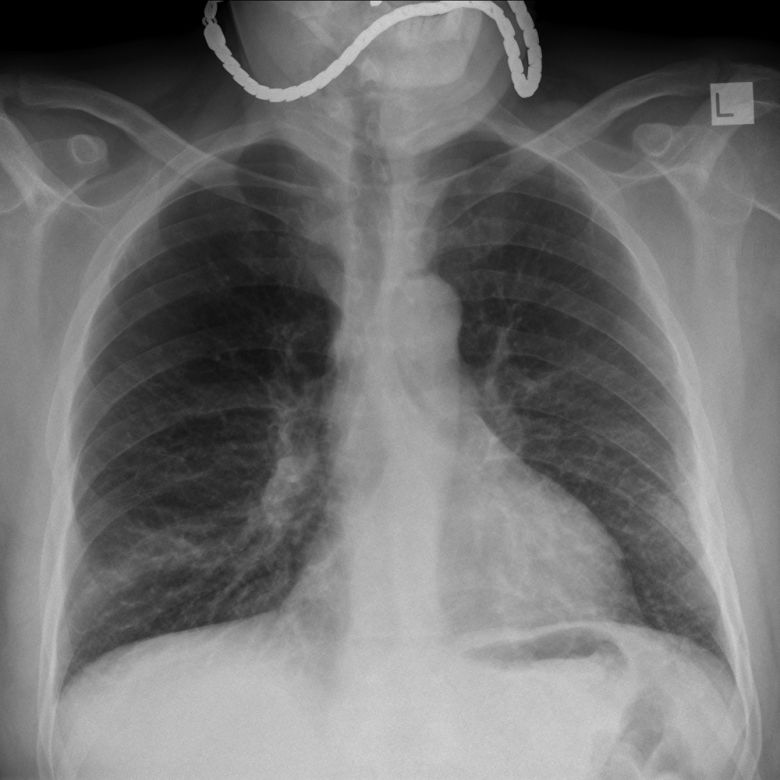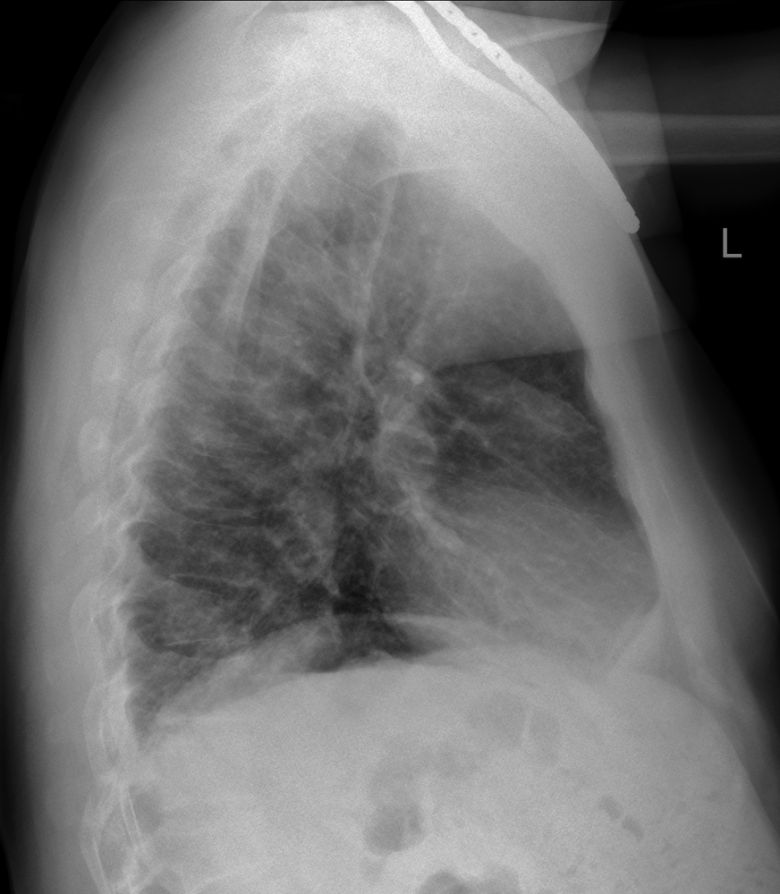Notes on Chest Radiography
Jump to navigation
Jump to search
Chest Radiography Video Tutorials
1. Chest Radiography of the Kyphotic Patient
3. Lateral Chest Arm Position 1
5. Chest Radiography of the Wheelchair-bound Patient
15. Aluminium Filters in Chest Radiography
17b. The Value of Good Inspiration - Lateral
18. The Value of Viewing old Chest Radiography Before you Start
19. The Value of Comparison with Old Chest Radiography
20. Radiography of 'Big Lungfields'
21. Bedside Chest Radiography of Non-compliant Patients
22. Non-compliant Patient with a Necklace
Summary
References
<embed allowfullscreen="true" height="350" src="http://widget.wetpaintserv.us/wiki/wikiradiography/widget/youtubevideo/819bedc8891906c19d0bd447c58f0e7e001ec27b" type="application/x-shockwave-flash" width="425" wmode="transparent"/> <embed allowfullscreen="true" height="350" src="http://widget.wetpaintserv.us/wiki/wikiradiography/widget/youtubevideo/a693da619c436ef8be614d64364cda5a00f1ba78" type="application/x-shockwave-flash" width="425" wmode="transparent"/>
1. Chest Radiography of the Kyphotic Patient
2. Bedside Chest Radiography of the Morbidly Obese Patient
This is an AP sitting bedside chest image of a morbidly obese patient. Whilst largely displaying the chest anatomy, it is lacking in contrast and anatomical structures posterior to the heart are not demonstrated clearly. The technique is non-grid and the exposure factors employed were 95kVp and 6 mAS This is the same patient who has undergone bedside chest radiography the next day. The patient is in the AP sitting position . The radiographer has used an 8:1 ratio stationary grid in the portrait orientation. The risk of grid cut-off is reduced when the grid lines are orientated vertically. The exposure used was 110kVp and 10mAS. Whilst the exposure used is considerably larger than the non-grid technique of the previous day, the results are considerably improved. The disadvantage with this technique, as demonstrated in this case, is that the portrait cassette /grid orientation increases the risk of non-demonstration of the lateral aspects of the chest. ("cutting the sides off" in radiographer parlance). One solution to this problem is to use a 35 x 43 cm grid with the grid lines orientated transversely.
Whether the additional radiation dose to the patient associated with the use of a grid technique is warranted may be a difficult judgement, but should be made "on balance" taking into consideration all of the relevant variables (clinical situation, likely increase in patient dose, diagnostic benefits etc).
A study published in the BJR <a class="external" href="http://bjr.birjournals.org/cgi/reprint/73/873/963" rel="nofollow" target="_blank">(1)</a> concluded that a grid technique was not warranted when using digital selenium radiography. This study did not however consider bedside radiography in morbidly obese patients.
Another study found that it was better to use a solid copper sheet faced cassette to absorb scatter radiation <a class="external" href="http://www.nv-med.com/jsrt/contents/abstract.php?bn=20015704&no=2" rel="nofollow" target="_blank">(2).</a>
Yet another study concluded that with PA chest radiography a 5 to 10 inch airgap would produce similar effects to a stationary grid.<a class="external" href="http://www.ajronline.org/cgi/content/abstract/122/1/109" rel="nofollow" target="_blank">(3)</a>
See also <a class="external" href="http://bloggingradiography.blogspot.com/2008/01/to-grid-or-not-to-grid.html" rel="nofollow" target="_blank">Jeremy Enfinger's</a> excellent website for discussion on this subject, particularly his suggestion of using a short dimension grid.
3. Lateral Chest Arm Position 1
4. Lateral Chest Arm Position 2a
This patient has a right upper lobe (RUL) consolidation. There is abnormal opacity demonstrated above the horizontal fissure of the right lung and an air bronchogram is visible. The lateral chest projection demonstrates the RUL consolidation, but the appearance is complicated by the soft tissues of both arms. The preferred position is to cross the arms across the patient's head (I ask the patient's to "grab opposite elbows") rather than the "hands on head, elbows forward" position.
Benjamin Felson (<a class="external" href="http://www.amazon.com/Chest-Roentgenology-Benjamin-Felson/dp/0721635911/ref=sr_1_2?ie=UTF8&s=books&qid=1252240078&sr=1-2" rel="nofollow" target="_blank">Chest Roentgenology, W.B. Saunders, 1973, p11</a>) notes that "... to delineate the anterior mediastinum, it s better to obtain the lateral view with the arms and shoulder drawn back (military style) rather than extended forward.
This 32 year old male patient has an abnormal opacity in the RUL. Whilst there are many possible causes of this upper lobe opacity, a round pneumonia or a malignant lesion would be considered.
Note also that the lesion is not partially obscured by the patient's right scapula. The patient's shoulders have been rolled well forward resulting in lung fields unobscured by the scapulae.The radiographer has crossed the patient's arms across his head affording an advantageous view of the lesion without the overlying soft tissues of the patient's arms.
4. Lateral Chest Arm Position 2b
5. Chest Radiography of the Wheelchair-bound Patient
6. AP Sitting Chest Radiography- Position of Scapulae
7. AP Sitting Chest Radiography- How Upright?
8. Assess Your Entire Image
9. Beware Artifacts
When assessing your image it is worth considering the radiology as well as the radiography. There are sometimes findings that need to be relayed back to the referring doctor for urgent attention (e.g. pneumothorax, flail chest, tension pneumothorax). In this case, the patient has an unexpected dislocated shoulder that had been missed on earlier chest imaging.
10. Markers and Text
11. Side Markers
12. Paediatric Chest Radiography
13. Arm Abduction
14. Beam Collimation
This is an AP sitting chest image. The patient's left arm is not abducted sufficiently resulting in overlap of the soft tissues of the arm over chest anatomy. A minimum of abduction of the patient's arm will overcome this problem.
The Serratus anterior muscle can also produce an opacity that may resemble pleural tickening. This is sometimes referred to as a "bowling-pin" silhouette.
"When the muscle is well developed, the medial edge of this silhouette may be superimposed upon the air shadow of the lung in a variety of ways. When it overlies the apex of the lung, it gives rise to the companion shadow; when overlying the midlateral lung edge and costophrenic angle it may mimic pleural and/or extrapleural disease. Recognition of the various possible patterns is important to prevent overdiagnosis of disease, particularly asbestosis."
<a class="external" href="http://www.ncbi.nlm.nih.gov/pubmed/441365" rel="nofollow" target="_blank">
</a><a class="external" href="http://www.ncbi.nlm.nih.gov/pubmed/441365" rel="nofollow" target="_blank">Gilmartin D.The serratus anterior muscle on chest radiographs. Radiology. 1979 Jun;131(3):629-35.</a>
-colonic interposition or Chilaiditi Sign (Pronounced “Ky-La-Ditty”) notedThis patient has her hand overlying the left lower lobe. It is good practice when undertaking bedside chest radiography to with-hold exposure until you can see both of the patient's hands.
This is an AP sitting chest image. 4-way collimation is rarely seen in chest radiography. One method that radiographers' employ to good effect is to collimate no wider (laterally) than the AC joints. Note that the lateral collimators are opened exactly to the AC joints.
Tight collimation reduces patient dose and scatter radiation. The improvement in image quality is most noticeable in morbidly obese patients.
15. Aluminium Filters in Chest Radiography
This is a PA erect chest radiograph on a lady with large breasts. The costophrenic angles are just visible but underpenetrated. This is the same projection of the same patient using an aluminium filter. The differences may appear subtle at first. Compare the costophrenic angles and the heart shadow. You would have a much better chance of diagnosing a left lower lobe pathology on this image than the one without the aluminium filter.
Note that this is a radiograph rather than a digital image. The benefits of utilising an aluminium filter are considerably less when a digital technique is employed (CR or DR).
16. Single View Chest Radiography
This is a PA/AP chest image on a paediatric patient. It may be tempting in a difficult patient to finish the examination at this point. The lung fields are well demonstrated and you can even see behind the heart and under both hemi-diaphragms. This is a lateral chest image on the same patient. Note the left lower lobe consolidation. In retrospect, there is increased opacity seen behind the heart on the AP view, but this could easily be missed.
Any single view radiography is hazardous, and the chest is no exception.
There is further discussion on the value of a lateral chest image here.
17a. The Value of Good Inspiration - PA
17b. The Value of Good Inspiration - Lateral
18. The Value of Viewing old Chest Radiography Before you Start
Patients who have unusual chest anatomy tend to have radiographic errors repeated when the radiographers don't check old imaging before they start.
It is common practice in Australia for Radiographers to tell patients when they have "long lungs". There have been many occasions when a patient has said to me "... the last time I had a CXR the radiographer advised me to tell you that I have long lungs". This is a simple effective practice.Whilst some patients have long lungs, others have wide lungs. Despite a valiant effort by the radiographer to fit the chest anatomy with the cassette in portrait orientation, landscape cassette orientation would have been a better choice.
19. The Value of Comparison with Old Chest Radiography
20. Radiography of 'Big Lungfields'
21. Bedside Chest Radiography of Non-compliant Patients
There is a level of compliance that is required for most radiographic examinations and bedside chest radiography is no exception. There is a case for advising the referring doctor that satisfactory and safe chest radiography will not be possible with the patient's current level of non-compliance. This will ensure that the referring doctor will either increase the patient's level of sedation or reconsider the need for the X-ray examination where increased sedation is not tenable.
Producing an image such as this one is a largely pointless exercise- where there is a low likelihood of success, it is prudent to consider alternative approaches including abandoning the examination.
22. Non-compliant Patient with a Necklace
Summary
Plain film radiography is not considered a particularly 'sexy' imaging modality today and chest radiography even less so. Despite this, plain film radiography remains the mainstay modality of many imaging departments and chest radiography is usually the most common plain film examination. Not unlike any other area of medical imaging, it can be done well or badly, and deserves the attention and effort of radiographers to achieve the best possible result.
References
....back to the Applied Radiography home page
1. T M BERNHARDT, MD, U RAPP-BERNHARDT,U W KRAUSE, MD and W DOEHRING, MD. Digital selenium radiography:radiography in a clinical study. The British Journal of Radiology, 73 (2000), 963±968 E 2000 The British Institute of Radiology
<a class="external" href="http://bjr.birjournals.org/cgi/reprint/73/873/963" rel="nofollow" target="_blank">http://bjr.birjournals.org/cgi/reprint/73/873/963</a>2. HIROSHI SATO, TAKAHITO KATANO, YOSHIFUMI NAKAMURA, and YOSHIAKI KITAMURA. Study of Chest Portable Radiography using Computed Radiography: Removal Effect of X-ray Scatter by a Copper Plate. Jpn J Radiol Technol 2001; 57 (4) : 433-439 3. ROBERT G. GOULD M.S. and JOHN HALE PH.D. CONTROL OF SCATTERED RADIATION BY AIR GAP TECHNIQUES: APPLICATIONS TO CHEST RADIOGRAPHY, American Journal of Roentgenology
